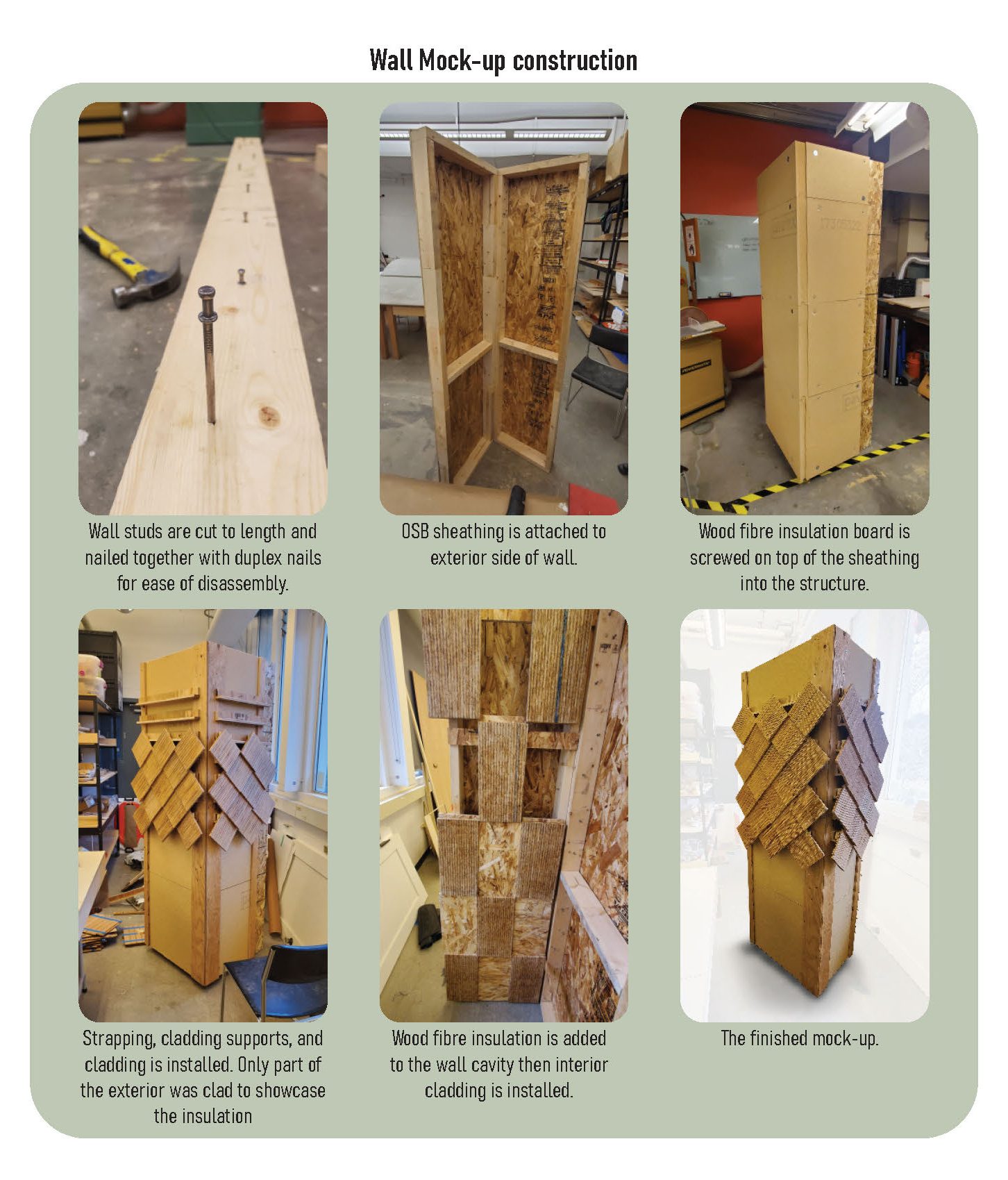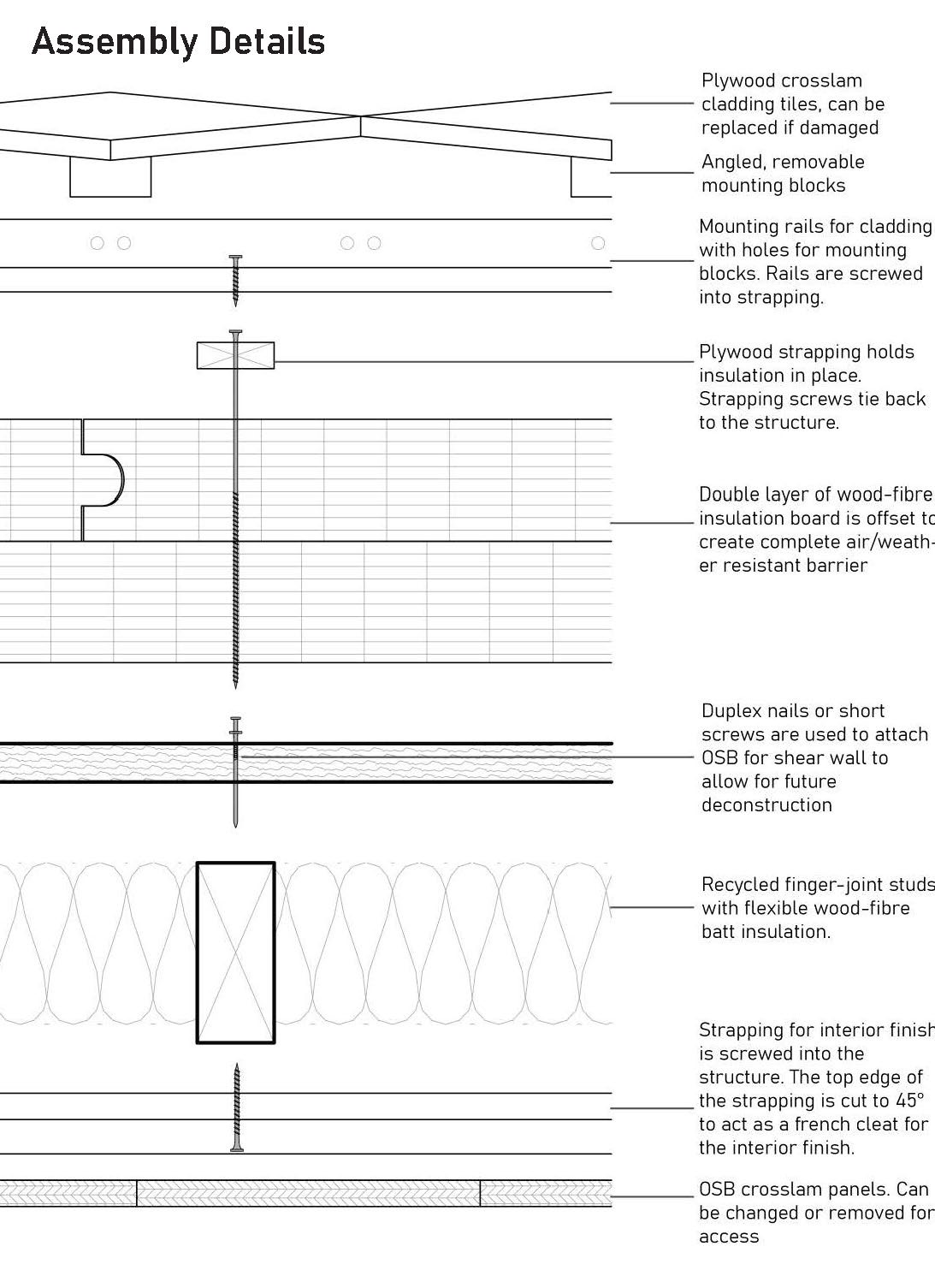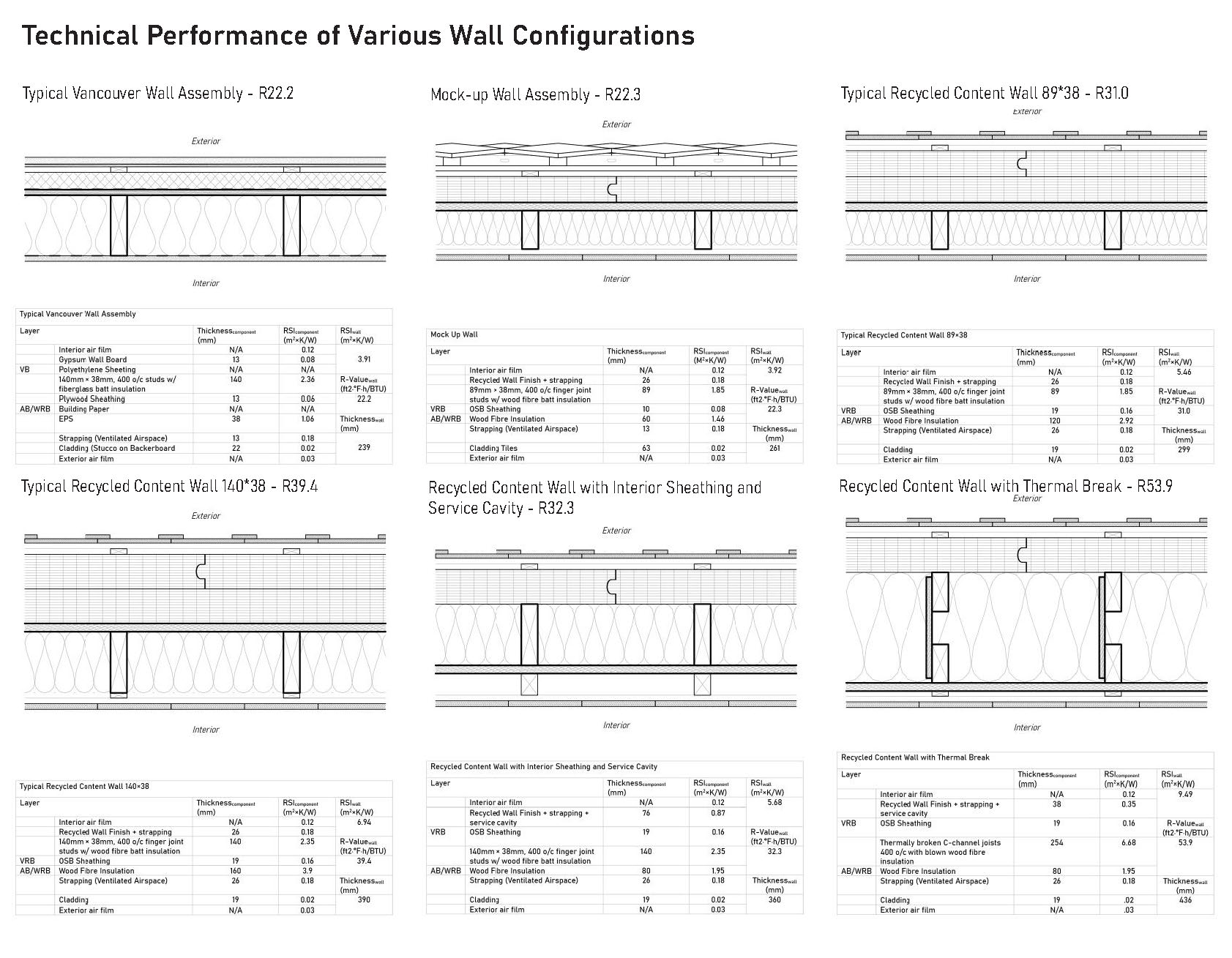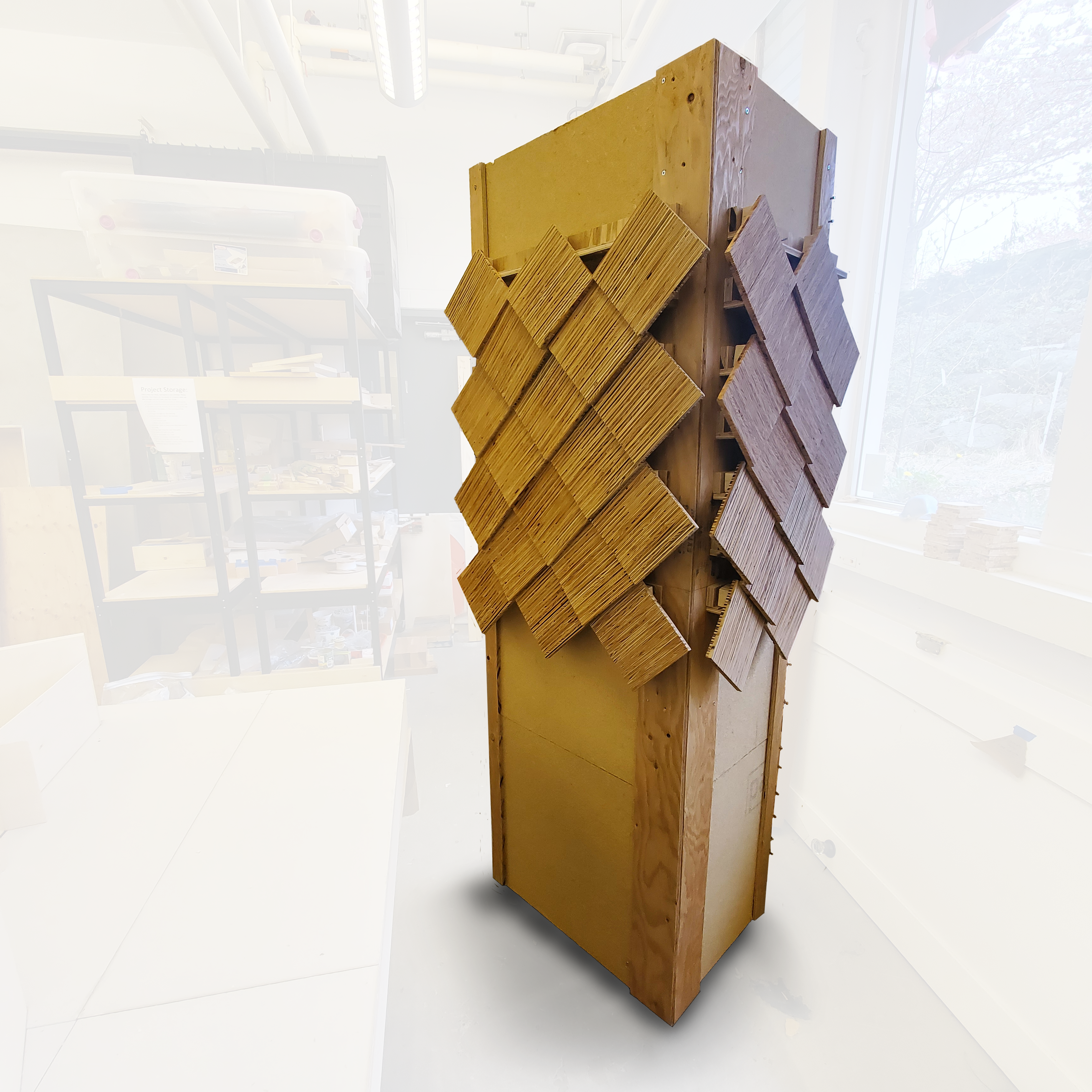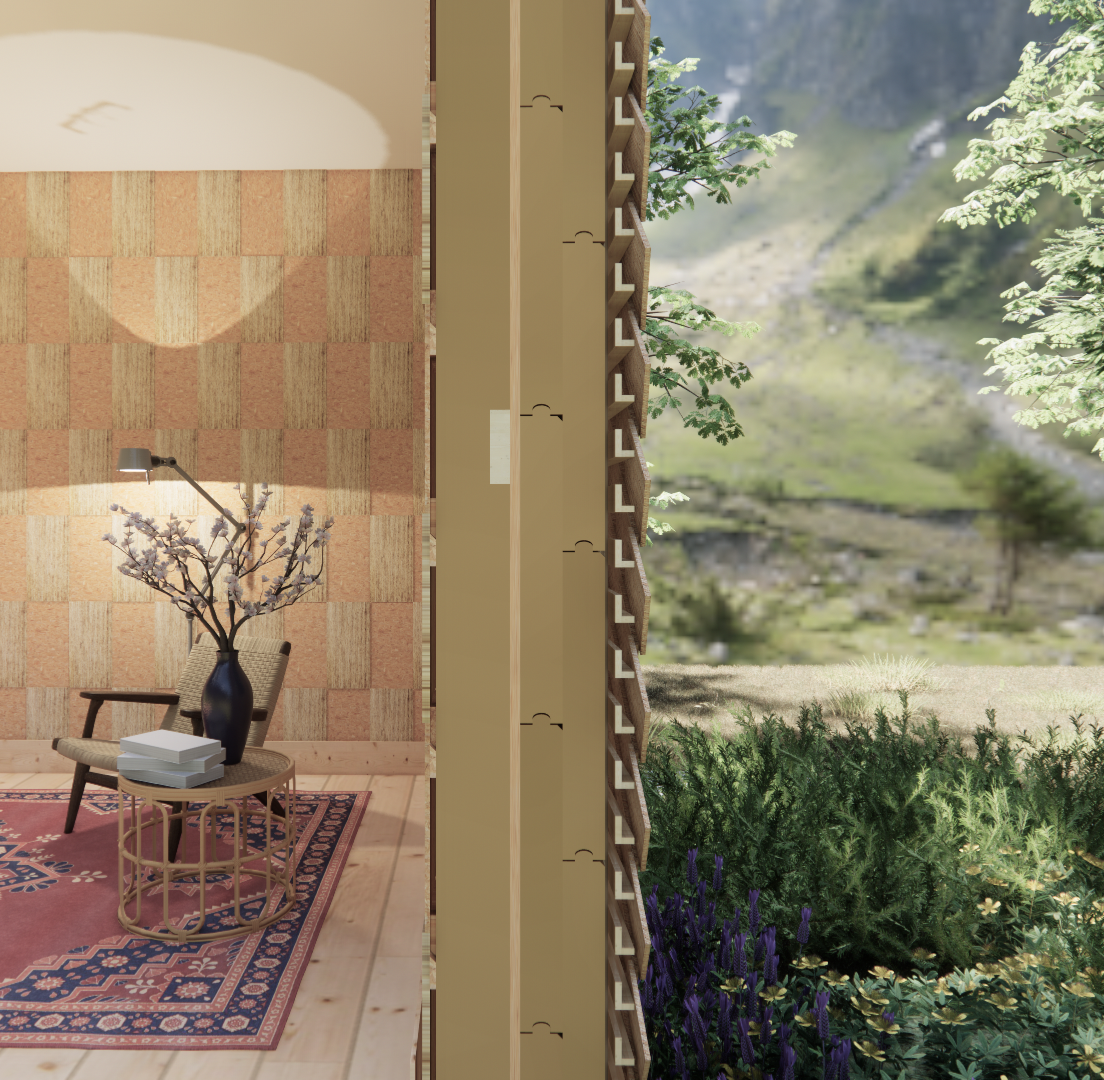
Creating material pathways for salvaged wood is only one part of building a circular economy in construction and demolition. In order to effectively salvage materials for reuse and recycling we need to change the way that we build. This thinking lead to the design of a light-wood wall system which slightly alters traditional stick-frame construction so that it can be easily disassembled at the end of the building’s useable life. This wall section takes a basic light-wood frame wall and swaps out all new materials for recycled-products. The framing is made with finger-jointed lumber, which is assembled with screws and double headed nails so that it can be deconstructed with minimal damage. OSB sheathing is also installed with double headed nails. Wood fibre insulation is screwed in over top of the sheathing and secured with the strapping. Plywood and LVL crosslam tiles are installed onto the strapping using a demountable rainscreen system so that any damaged tiles can be easily replaced. And the interior of the wall has wood fibre cavity insulation and more removable OSB and LSL crosslam tiles as the interior finish which provide an alternative to traditional drywall and create an accessible service cavity.
The wall system omits any adhesives or plastic films that would get in the way of recycling the wall components, but the OSB sheathing acts as a vapour permeable barrier and the exterior insulation is a complete air and weather resistant barrier
making the whole system airtight but breathable to vapour. This system, as built in the mock up, has a thermal performance of R-22.3 which is on par with City of Vancouver recommendations. And with slight tweaks to the assembly it can easily achieve much higher ratings. The images below lay out the assembly and performance details of the walls as well as the fabrication process used to construct the mock-up.
Our goal is to familiarize building professionals with the advantages design for deconstruction practices, and to prove that simple changes can have massive impacts to the durability of construction materials. Increasing familiarity with good construction and deconstruction practices is essential to effectively recycling a building’s materials and allowing for a functional circular economy.
